Get PeakVisor App
Sign In
Search by GPS coordinates
- Latitude
- ° ' ''
- Longitude
- ° ' ''
- Units of Length

Yes
Cancel
Share ×

Scan the QR code and open PeakVisor on your phone
❤ Wishlist ×
Choose
Delete
The Mojave Wilderness protects 695,200 acres (281,337 ha) of the 1.6 million-acre (647,497 ha) Mojave National Preserve, a vast expanse of desert lands, mountain ranges, sand dunes, and unique volcanic features in the US state of California. There are 30 named mountains in Mojave Wilderness, the highest and the most prominent of which is Clark Mountain (7,927 ft/2,416 m).
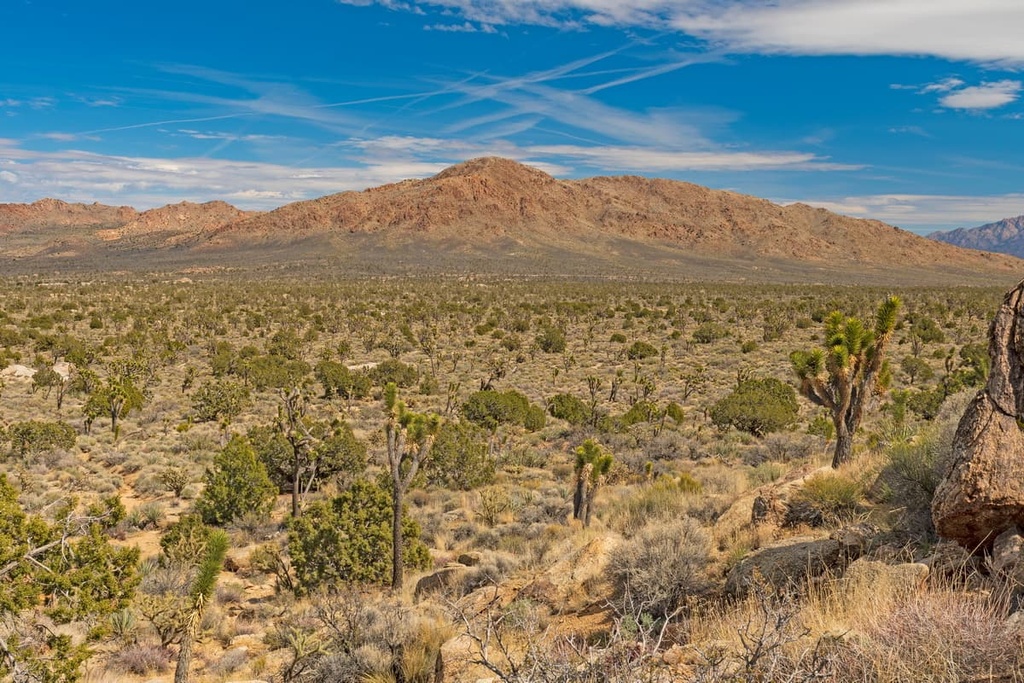
The Mojave Wilderness is a federally protected area of land located in the southern part of the US state of California. It is situated along the state’s border with Nevada in San Bernardino County.
The Mojave Wilderness is home to many striking natural features. Located along the southern boundary of the wilderness, the Kelso Dunes cover 45 square miles (120 sq. km) of land and rise 650 feet (200 m) above the desert floor.
Directly to the south of the Kelso Dunes, the rugged Granite Mountains stretch from Granite Pass to Budweiser Wash, reaching a maximum elevation of 6,759 ft (2,060 m) at the summit of Granite Peak.
Near the northern boundary of the Mojave National Preserve, the Mojave Wilderness protects portions of the Cinder Cone Lava Beds, which is home to 32 conical mountains of red and black volcanic rock, and Cima Dome, which rises 1,500 feet (460 m) above the surrounding volcanic plain.
Another prominent feature of the Mojave Wilderness, Clark Mountain, rises to 7,927 ft (4,298 m) above Interstate 15, making it the highest point in the Mojave National Preserve. Though most of the Mojave Wilderness is characterized by little rainfall, high-elevation, some of the region’s mountainous areas, like Clark Mountain, receive seasonal snowfall.
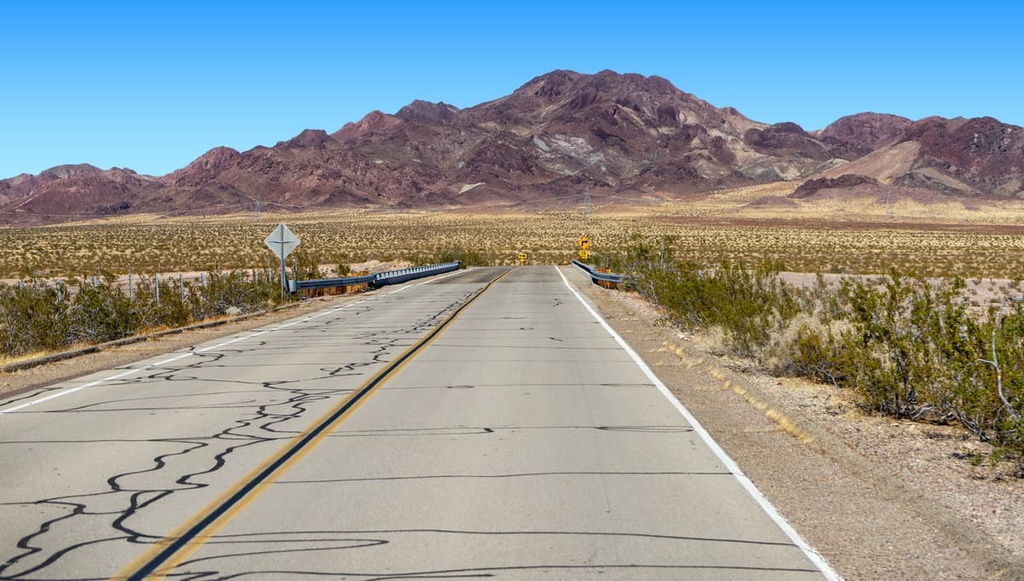
The Mojave Wilderness is located near several areas of protected land, including the Mojave Trails National Monument, Joshua Tree National Park, Sheephole Valley Wilderness, Dead Mountains Wilderness Area, Lake Mead National Recreation Area, and Death Valley National Park. The wilderness is also within driving distance of three major tourist destinations: Las Vegas, Laughlin, and Lake Havasu.
The Mojave Wilderness lies in the Basin and Range physiographic province, a vast region dominated by north-south trending mountain ranges and alluvium-filled basins. The geology of this region is complex due to extensive igneous and metamorphic activity.
A large part of the Mojave Desert lies in the Mojave National Preserve. The oldest rocks exposed in the Mojave National Preserve are between 1.7 and 2.5 billion years old. They consist of metamorphic rocks that are sedimentary and igneous in origin.
The Mojave National Preserve and Mojave Wilderness contain a variety of natural features that contain evidence of the region’s incredible geologic past. The Providence Mountains, for example, are composed of a thick sequence of Paleozoic-age formations of the ancient North American continental margin basin.
The Granite Mountains, one of the largest ranges in the eastern Mojave Desert, are part of a huge igneous batholith similar in age and origin to the Sierra Nevada. They are composed of Mesozoic plutonic rocks (63 to 240 million years old) and contain one of the most outstanding examples of exposed granite pediment in North America.
The Kelso Dunes, another geologic wonder, accumulated 2,400 to 9,000 years ago. Geologists hypothesize that sand from the Mojave River, Soda Lake, Kelso Wash, Granite Mountains, and Providence Mountains have all contributed to the complex origin of the dunes.
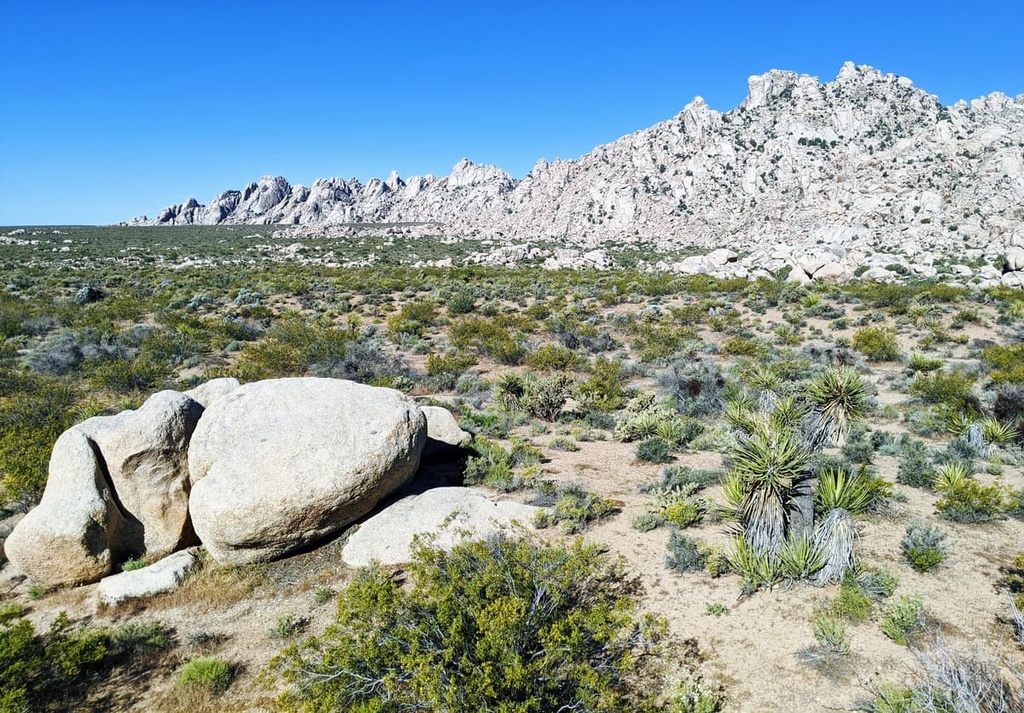
Researchers believe that wind blowing from the northwest carried sand southward. However, the Providence Mountains and Granite Mountains lie in the path of the prevailing winds, blocking the moving sand. As a result, sand piles at the base of the mountains and along their flanks.
During the Late Tertiary and Quaternary periods, volcanic ash from large volcanic eruptions throughout the Great Basin region covered the Mojave region. Eruptions associated with the Cinder Cones and Lava Beds areas continued episodically through the late Quaternary and the last volcanic episode in the area occurred just 8,000 years ago.
Despite its harsh, desert environment, the Mojave Wilderness supports a diverse range of plant and animal species. Desert plants, including shrubs and cacti, have adapted to living in the region’s arid climate by minimizing moisture loss, storing large volumes of water, or developing deep root systems to gather water.
The most pervasive plants in the wilderness include yucca, creosote, cholla, and the Joshua tree. In fact, the Joshua tree forest of Cima Dome and Shadow Valley is the largest and densest population of Joshua trees in the world. Meanwhile, higher elevations in the wilderness act as sky islands, sustaining stands of white fir, juniper, and pinyon pine.
The broader Mojave National Preserve is home to 50 known species of mammals, over 200 species of birds, 36 species of reptiles, 3 species of amphibians, 3 species of fish, and numerous species of insects and arachnids.
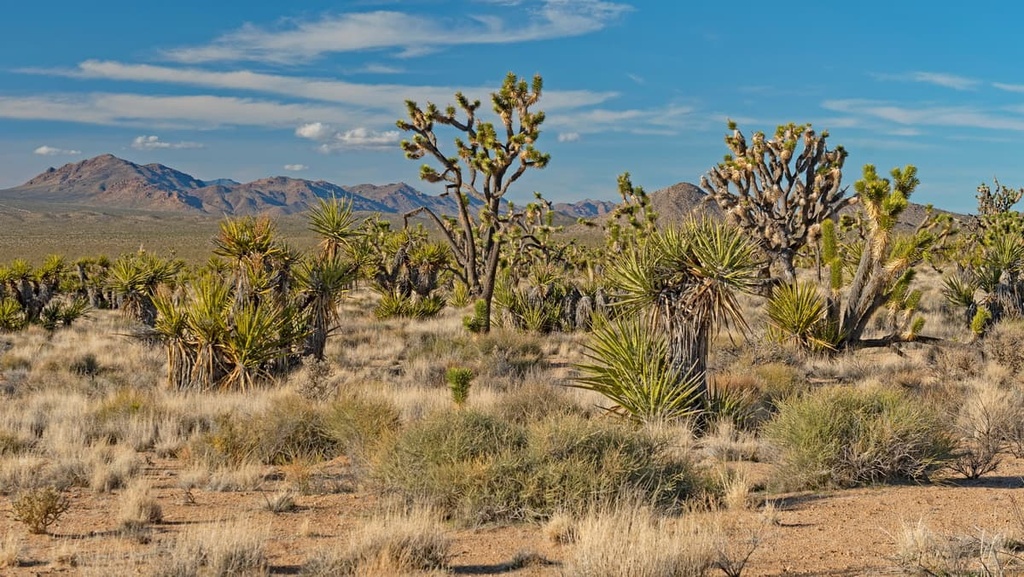
Areas within the Mojave Wilderness, like the Kelso Dunes, support populations of rare and endemic species, including the Mojave Fringe-toed lizard, Kelso Dunes Jerusalem cricket, Kelso Dunes giant sand treader cricket, and Kelso Dunes shieldback katydid. Kit foxes, kangaroo rats, jackrabbits, coyotes, sidewinders, and desert tortoises can be spotted here, too.
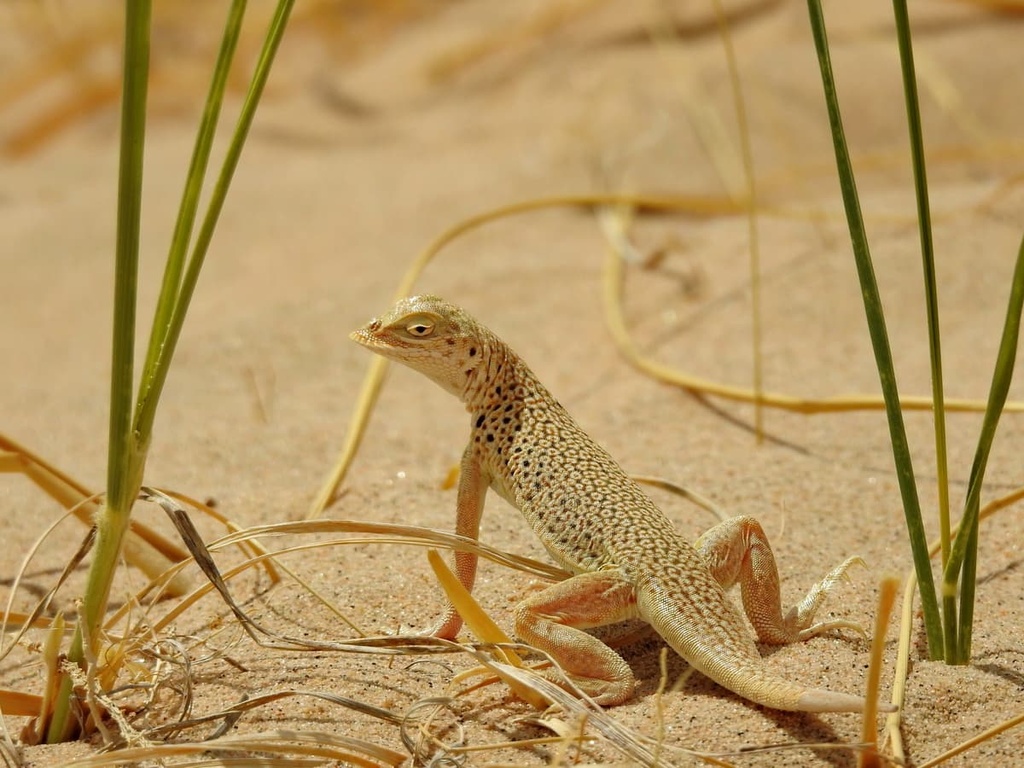
Prior to the arrival of Europeans, the Mojave National Preserve was the traditional territory of the Chemehuevi people, who historically resided in the Kingston Range, New York Mountains, and Providence Mountains west to Soda Dry Lake and south to the Whipple Mountains.
Spanish Franciscan friar Father Francisco Garces was the first to encounter members of the Mojave ('Aha Makhav) tribes in 1776 during his expedition across the Mojave Desert. However, by the early 1800s, several more missionaries and settlers, including Jedediah Smith and John Fremont, had arrived in the Mojave.

By the late 1800s, gold fever had struck California. The General Mining Law, which allowed individuals to stake a claim on an area of land where a mineral deposit was discovered, enticed prospectors to the region. Copper, iron, gold, and silver mines were quickly established throughout the Mojave. Ranchers also became established in the region.
In 1883, silver was discovered in the Bonanza King Mine on the eastern side of the Providence Mountains. Between 1896 and 1916, over $64,000 in gold was extracted from the Hidden Hill Mine and by the 1940s, the Vulcan Mine had produced over $7 million worth of iron. Remnants of these mines lie in the present-day Mojave Wilderness.
The Mojave National Preserve, which had previously been called the East Mojave National Scenic Area, was established October 31, 1994. Nearly half of all preserved lands were designated the Mojave Wilderness.
The Mojave Wilderness is home to a variety of hiking trails that highlight the unique geologic and human history of the region. Here are some of the best hikes in the wilderness area.
The Kelso Dunes are one of the most popular hiking destinations in the Mojave Wilderness. One of only seven known booming sand dune fields in North America, the Kelso Dunes cover 45 square miles (117 sq. km.) and rise 650 feet (198 m) above the desert floor.
A 3-mile (5 km) trail leads to the top of the dunes and boasts fantastic views of nearby peaks and dunes. It is not recommended to hike the dunes during summer months, when temperatures can reach up to 120° F (49° C).
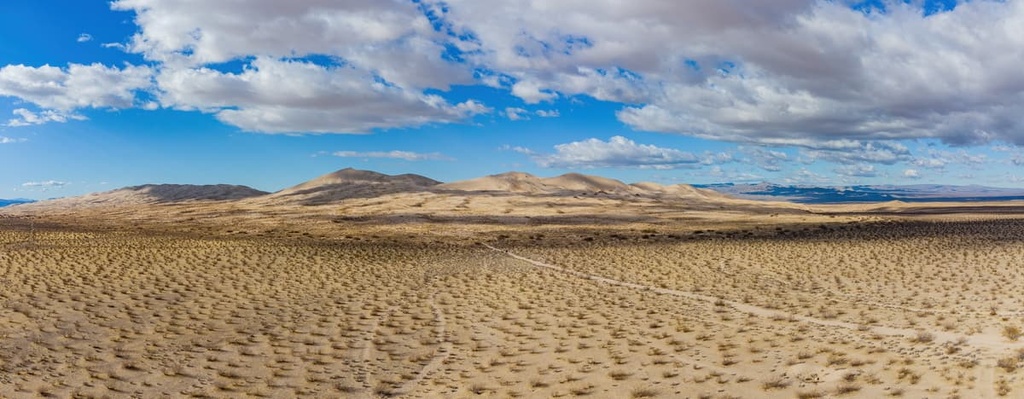
Dozens of incredible cinder cones are scattered across the Mojave Desert between the city of Baker and Kelso Depot Visitor Center in the Mojave National Preserve.
Within the lava field lies a short trail leading beneath the surface, into a lava tube. A ladder leads down into the tube where holes in the rock ceiling illuminate the landscape below. A high-clearance vehicle is recommended to access the trail.
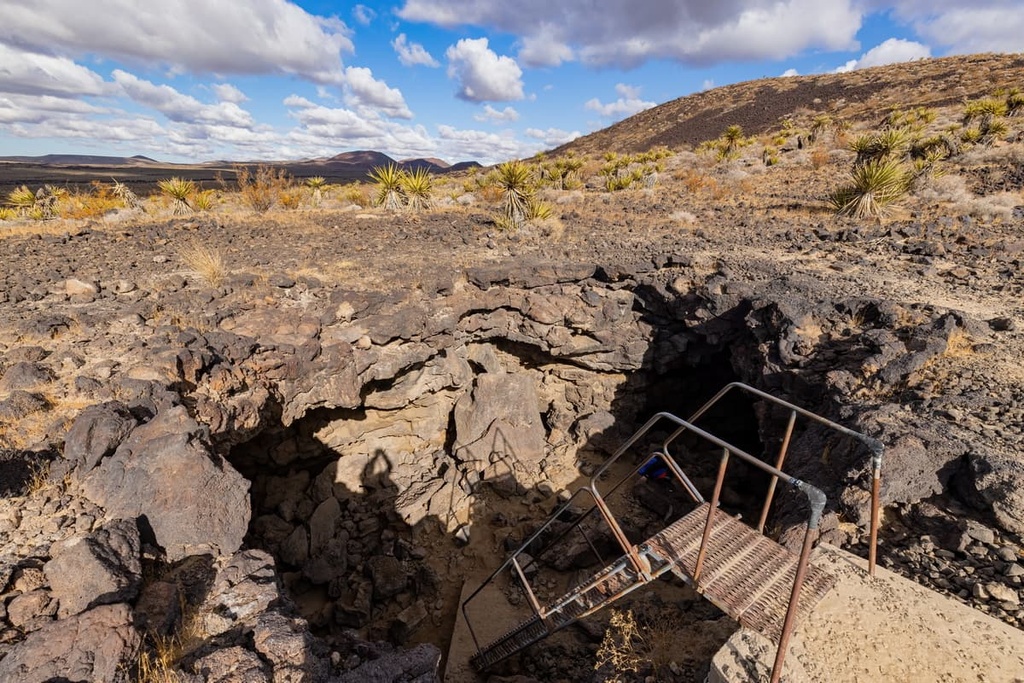
Tucked in the northeast corner of the Mojave National Preserve, the New York Mountains run in a mostly southwest-northeasterly direction between the Providence Mountains and McCullough Range.
The summit of the tallest peak in the range, New York Mountain Two, can be reached via a 9.4-mile (15.1 km) trail and boasts sprawling vistas of the surrounding desert terrain.
Teutonia Peak is a craggy summit located at the edge of Cima Dome in the Mojave Wilderness. In 2020, a 43,273-acre (17,512 ha) wildfire ripped through the Joshua Tree woodland of Cima Dome. The 3-mile Teutonia Peak trail is a great way to examine the aftermath of the Dome Fire, and to experience panoramic views of the surrounding wilderness.
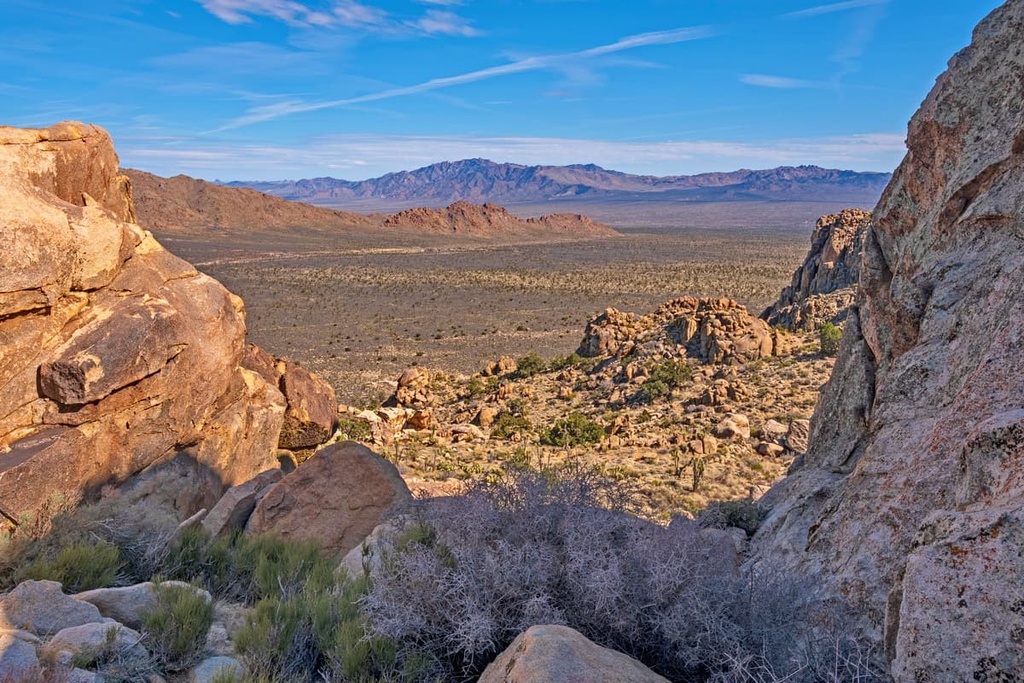
The Hole-in-the-Wall trail showcases much of the Mojave’s dramatic geology. A subtle foot path leads to ancient petroglyphs and descends into Banshee Canyon, allowing visitors to explore unique rock formations shaped by volcanic eruptions.
The Mojave Wilderness is a remote area. However, there are nearby cities that visitors can travel through on their way to the wilderness. Here are some of the best places to check out on your journey.
Though Baker is best-known for its giant thermometer and proximity to Las Vegas, Nevada, the city is also central to several popular outdoor recreation destinations, including the Mojave National Preserve, Death Valley National Park, Joshua Tree National Park, and the Mitchell Caverns Natural Preserve.
Home to just 541 residents, Baker is a small town, but it’s a great place to stop along I-15 to refuel and resupply before heading into the Mojave National Preserve.
Another popular pitstop along I-15, Barstow, serves as a major transportation hub for the Inland Empire. Barstow is a larger city than nearby Baker and offers a wide variety of amenities and accommodations.
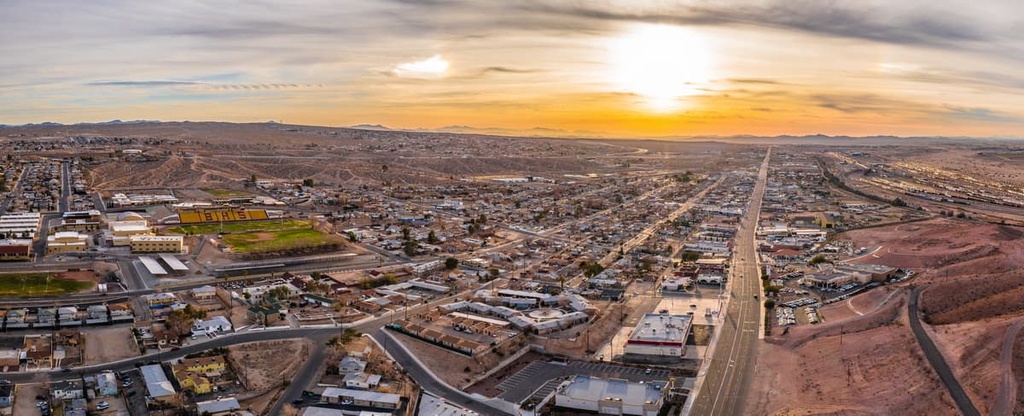
The city is home to Barstow Station, which serves 20,000 tour buses a year and includes gift shops, dining options, and a Greyhound terminal. Barstow is central to the Mojave National Preserve, Death Valley National Park, Joshua Tree National Park, the San Bernardino National Forest, and Angeles National Forest.
Located just 68 miles (109 km) from the Mojave National Preserve, Las Vegas is renowned for its lively nightlife, fine dining, and extravagant entertainment. Las Vegas is also home to an international airport and a wide variety of amenities and lodging options.
Just a short distance from the city lies a variety of incredible natural attractions, including the Red Rock Canyon National Conservation Area, Lake Mead National Recreation Area, Valley
of Fire State Park, Spring Mountains National Recreation Area, and Mount Charleston.

Located roughly 55 miles (89 km) to the east of the Mojave National Preserve, Bullhead City boasts a variety of water recreation options, including boating, canoeing, fishing, kayaking, paddle boarding, tubing, and wakeboarding.
Visitors to Bullhead City can easily access Lake Mohave and Lake Mead, or travel to nearby Dead Horse Ranch State Park to explore dozens of hiking trails and scenic overlooks.

Explore Mojave Wilderness with the PeakVisor 3D Map and identify its summits.








western-state-climbers
western-state-climbers-emblem
desert-summits-book
sierra-club-desert
western-state-climbers
western-state-climbers-emblem
desert-summits-book
sierra-club-desert
